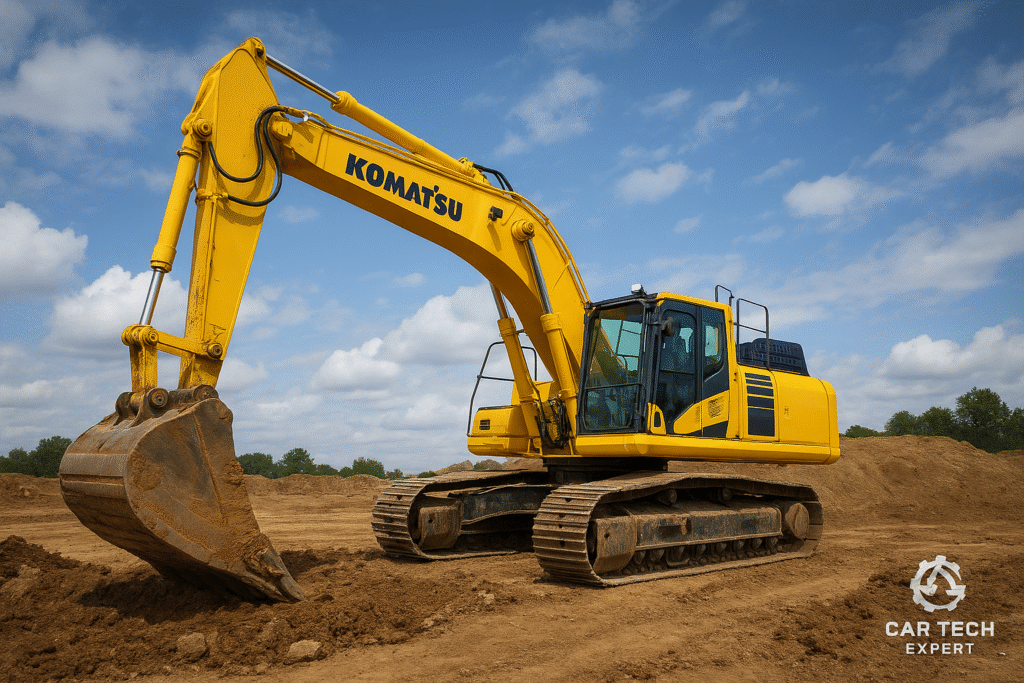Physical Address
Arthur Avenue , BrookField , ILLINOIS , 60513 , United State

When you hear the name Komatsu, you probably think of raw power, precision, and the unmistakable yellow machines that dominate job sites around the world. But what truly defines Komatsu is its philosophy — a deep respect for engineering, craftsmanship, and innovation rooted in Japanese tradition.
As a heavy equipment technician or enthusiast, understanding the evolution of Komatsu gives you more than just brand knowledge — it allows you to appreciate how decades of research and innovation have shaped the tools you rely on every day.
Komatsu’s story began in 1921 in Komatsu City, Ishikawa Prefecture, Japan. Originally part of the Takeuchi Mining Company, Komatsu Iron Works was established to provide reliable industrial machinery for Japan’s mining and construction industries.
These early decades built Komatsu’s core philosophy: “Quality and Reliability Above All.” This mindset still defines every innovation you see today.
After the devastation of World War II, Japan rebuilt — and so did Komatsu. By the early 1950s, the company focused on the nation’s reconstruction efforts, producing bulldozers, cranes, and forklifts that helped reshape Japan’s infrastructure.
The key milestone came in 1953, when Komatsu exported its first bulldozer to Thailand. This marked the start of its international expansion. Soon after:
This period wasn’t just about growth — it was about competition. Komatsu’s bold slogan, “Maru-Cat,” meaning “encircle Caterpillar,” became a symbol of its determination to lead globally.
You can’t discuss Komatsu’s history without talking about its relentless pursuit of innovation. Komatsu machines consistently push boundaries in design, safety, and efficiency.
Each innovation didn’t just change machines — it changed how technicians like you diagnose, maintain, and trust them.
As you step into the world of smart diagnostics and telematics, Komatsu stands at the forefront. Their KOMTRAX system allows real-time monitoring of equipment performance, location, and maintenance needs — directly impacting uptime and profitability.
Komatsu also invests heavily in AI and IoT, creating connected job sites where machines “talk” to each other and to technicians through data analytics. Predictive maintenance has become a key part of Komatsu’s offering — saving time, reducing downtime, and helping technicians like you anticipate issues before they arise.
| Feature | Komatsu | Caterpillar | Volvo CE | Hitachi |
|---|---|---|---|---|
| Headquarters | Tokyo, Japan | Deerfield, Illinois, USA | Gothenburg, Sweden | Tokyo, Japan |
| Core Strength | Smart technology & innovation | Durability & global service | Operator comfort & fuel efficiency | Precision & hydraulic systems |
| Diagnostic Systems | KOMTRAX / iMC | CAT ET / VisionLink | CareTrack | ConSite |
In 2025 and beyond, Komatsu has committed to achieving carbon neutrality by 2050. Their electric and hybrid excavators are already reducing emissions on job sites worldwide. The brand is integrating battery-powered technology and alternative fuels to meet modern sustainability demands.
For technicians, this shift means learning new systems, high-voltage diagnostics, and advanced battery maintenance — skills that will define the next decade of your work.
Komatsu’s diagnostic philosophy goes beyond problem-solving — it’s about prevention. The company’s diagnostic ecosystem connects:
These systems empower you to make data-driven decisions and keep machines performing at peak condition.
The future of Komatsu is built around autonomy, electrification, and AI. The brand’s next frontier includes fully autonomous construction equipment, integrated job site management, and cloud-based diagnostics. Komatsu envisions a world where every piece of heavy machinery communicates seamlessly — optimizing productivity and safety.
Understanding Komatsu’s journey helps you see how far heavy equipment technology has come — and how it continues to shape your work today. From post-war recovery to advanced AI systems, Komatsu’s story mirrors the evolution of the entire industry.
If you enjoyed learning about Komatsu’s history, you’ll also love our previous articles:
For professional-grade diagnostic tools, manuals, and accessories, visit our store: store.cartechexpert.com
Stay connected with the latest in heavy equipment technology at cartechexpert.com
